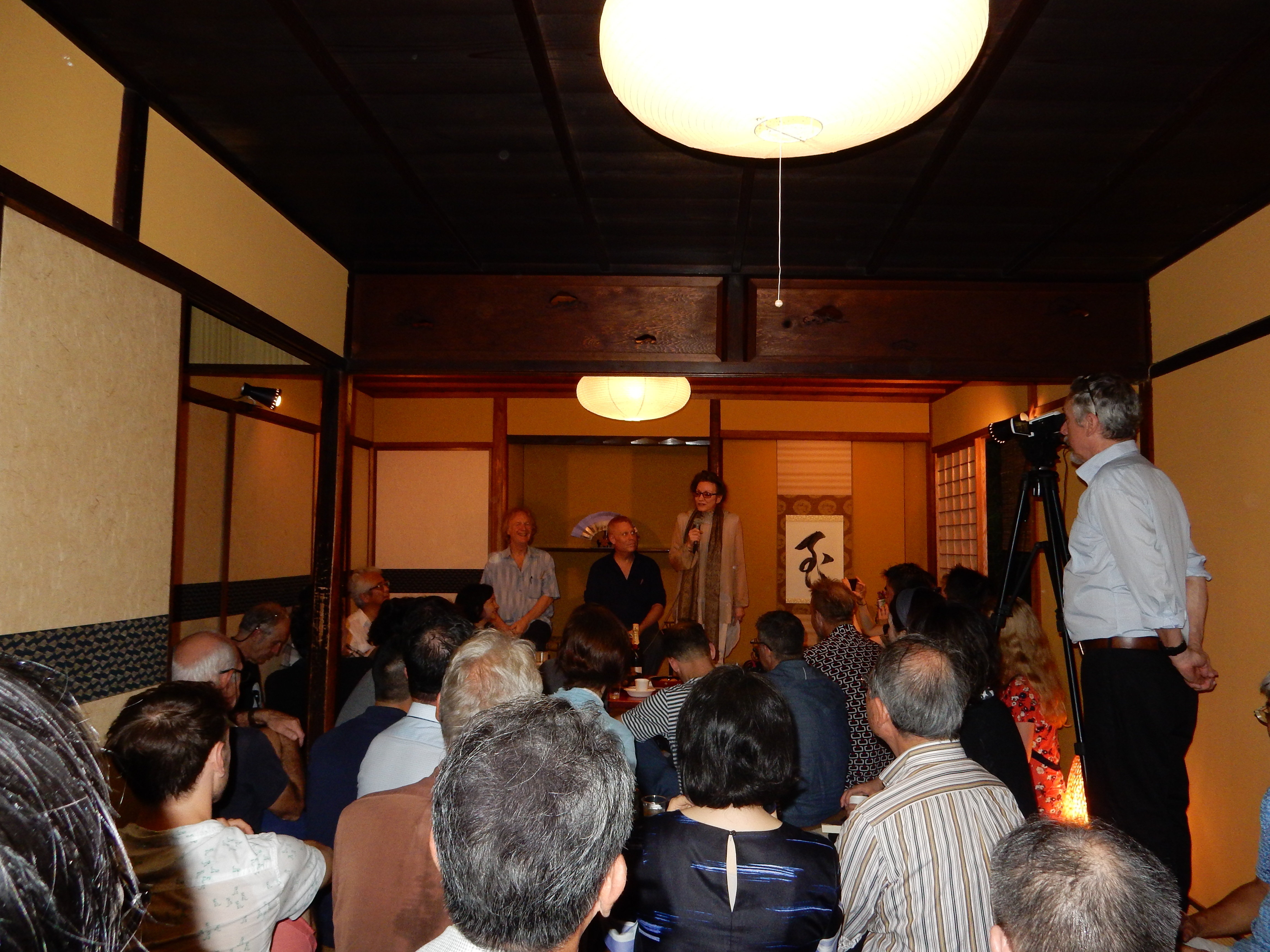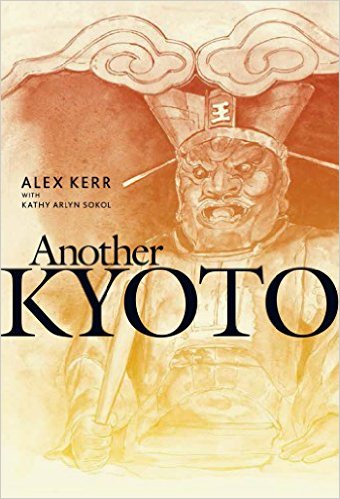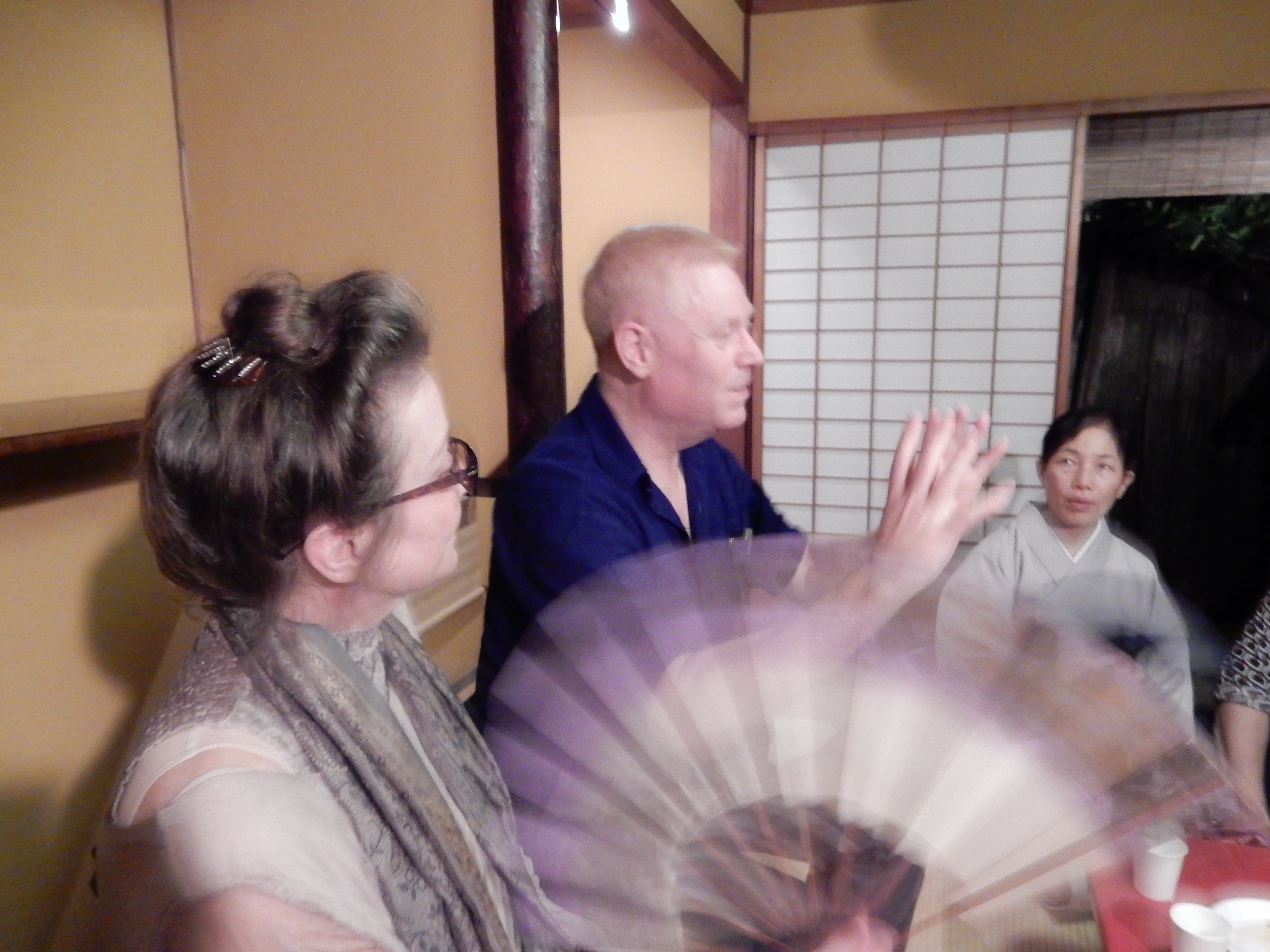Another Kyoto, by Alex Kerr

October 2 saw the book launch of Alex Kerr’s new book, Another Kyoto. A packed audience hung on his every word as he ran through his thoughts on Kyoto and Japan, drawing on his vast experience in terms of involvement with the country’s arts and architecture. The evening was split into two parts, with a presentation by Alex and Kathy in the first part and a Q and A session in the second. Drinks and snacks were provided in one of the machiya’s several rooms and a book signing in another. The house, near Kitano Tenmangu, had formerly been occupied by a geisha from the Kamishichiken district who died at the age of 102, as a consequence of which it escaped modernisation (and demolition), retaining its original character with painted fusuma and tea room. The setting could hardly have been more perfect for a speaker known for his restoration of old houses (as well as once running a business renting out restored machiya in Kyoto, Alex set up the Chiiori project in Shikoku).

There are of course already several guidebooks to Kyoto, but Another Kyoto is remarkable for taking a completely different approach. This is evident straightaway in the Contents. Rather than the standard listing of famous sights or geographical areas, the book covers such aspects as Gates, Walls, Floors, Tatami, Plaques, Fusuma, and Screens. The chapter on Shin-gyo-so is particularly illuminating about the different styles of formality, applied to paintings, ceramics and gardens. Only the final chapter on (Senbon) Enma-do has a conventional subject matter, and as Alex points out the temple is hardly mainstream.
By focussing on the material aspects of the arts and artefacts, Alex draws attention to features that are not usually considered or even referred to. In this respect the book is truly original – an extraordinary accomplishment for a city that has been so much written about. More than this, the book does what any work of art aspires to; it makes the reader see the world around them with fresh eyes. With Alex’s comments in mind, one no longer simply views a fusuma picture as simply a painting, but a precious piece of art on a fragile canvas that is destroyed by overexposure to daylight. This is all couched in a conversational style which arose out of talks with Kathy Sokol while visiting different places in Kyoto. Again, it serves to give the book a markedly fresh feel.
Another notable aspect of the book is the contextualisation of Kyoto arts within a wider East Asian setting. This stems partly from a deep personal involvement with Japanese culture (in addition to being a collector, Alex practises calligraphy and ran the Oomoto Summer School of traditional arts). It gives his judgements a measure of authority, for they are born out of close personal involvement. This is reinforced by his background knowledge of East and South-east Asia: he studied Chinese Studies at Oxford as a Rhodes scholar, and he lives half the year in Bangkok where he has taken root to the extent that he considers it as much ‘home’ as his residence in Kameoka (he is also working on a program there for traditional arts). As a result we do not see the arts and architecture of Kyoto as isolated examples, but as part of larger continental developments.
A third, and no less striking aspect of the book is the deliberate ‘provocation’ in challenging conventional views. Zen for example is described as noisy, loud and full of words – a far cry from its image as mysterious and silent. Gardens too, the pride of Kyoto, are downgraded as inferior versions of the genuinely artistic paintings that inspired them. In his talk, Alex smilingly admitted to a certain relish in provoking controversy with his remarks, and in his book he comments at one point, ‘We’ve got off onto a vein of gushing admiration, the usual tone of the stuff that people write about Kyoto. It’s really not my style.’ Yet even where one may disagree with his provocations, they always make one think and they often reveal an unexpected truth. For all the books on Kyoto gardens, for instance, there is not a single book about Kyoto art.
In the Question and Answer session, Alex was asked about his other books, and spoke of the award-winning Lost Japan as a work of love that would appeal to newcomers to Japan, while Dogs and Demons dealt with realities that had more relevance for longer-term residents. Another Kyoto, he said, was probably for those who had already gained an overview of the city’s cultural history and wanted to go beneath the surface. In response to another question, he talked of his memory of David Kidd, author of All the Emperor’s Horses and a legendary figure among Kyoto expatriates. Despite his longterm residence in the city, he apparently loathed Japanese art but treasured the country because it had so well preserved Chinese culture.
Asked about his feelings regarding present trends, Alex expressed (very) cautious optimism. When he started his machiya restoration project, there were only 12 in the city. Now there are 200. Grounds for optimism perhaps, until he pointed out that even today for every machiya being saved there are nine that are being destroyed. It is symptomatic of a sense of ‘Lost Japan’, and what came over from the event, above all, was the desire of Kathy and Alex to pass on his deep appreciation of the Japanese tradition. The book is ‘a kind of transmission,’ as Kathy noted. The book was twelve years in the making, and the labour of love is apparent in its attention to detail and wealth of material; astonishingly there are another nine chapters which could not be included because of size limitations. It conjures up the prospect that those of us who have read and enjoyed the book will have ‘Another Another Kyoto’ to look forward to!!

A video clip of the event can be seen on youtube thanks to Gary Tegler.
